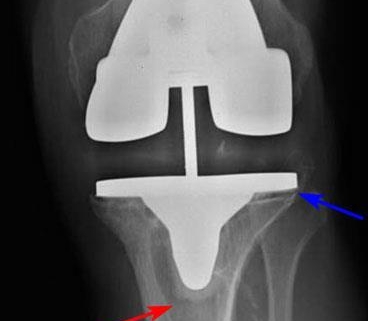
Revision Arthroplasty of the Knee
Overview
Revision Arthroplasty of the Knee is a surgical procedure that doctors often perform when a previous knee replacement starts to fail. As knee replacements have a lifespan, they may eventually require a revision or replacement. Data suggests that most modern knee prostheses are highly durable, with about 90% still functioning 15 years after the surgery. Nonetheless, various factors might make a knee arthroplasty necessary.
Types
Two types of knee arthroplasty refer to primary and revision knee arthroplasty. Primary knee arthroplasty is the regular surgical replacement procedure in which the damaged sections of the knee joint are replaced with artificial parts. Revision knee arthroplasty, on the other hand, is more complex and is needed when a previously implanted artificial knee joint needs to be replaced.
Causes
The main causes of knee arthroplasty failure necessitating a revision procedure include:
-
- Infection of the joint
-
- Wear and tear of the artificial joint
-
- Loosening or dislocation of the artificial joint
-
- Knee instability or stiffness
-
- Damage from an accident or fall
-
- Repeated high-impact activities and heavy manual work
Symptoms
If your previous knee replacement fails, you may experience:
-
- Increasing knee pain
-
- Swelling or warm feeling in the knee
-
- Decreased mobility
-
- An unstable or wobbly feeling when putting weight on the knee
-
- A noticeable clicking or grinding sound in the knee
Diagnosis
Your surgeon will perform a physical examination and may request imaging tests like X-rays, magnetic resonance imaging (MRI), or computerized tomography (CT) scans. In some cases, a blood test might help identify if an infection is present. Your doctor may also inquire about your symptoms and the impact on your daily activities.
Treatment Options
Treatment can vary depending on why the original knee replacement failed:
-
- For infections – antibiotics may be initially given, followed by revision surgery to replace the infected prosthesis with a new one.
-
- For loosening or instability of the implant – a revision surgery might be necessary to fix or replace the prosthesis.
-
- For arthrofibrosis (the knee becomes stiff and loses its range of motion) - physical therapy or a “manipulation” procedure may be needed. Revision surgery might be required in severe cases.
Living with Revision Arthroplasty of the Knee
Post-revision, life will initially demand patience and determination. Physical therapy is a crucial part of recovery as it helps regain strength, stability, and a range of motion in your knee. There might be lifestyle changes required in terms of physical activities, such as avoiding high-impact activities like jogging or jumping. Regular follow-up with your surgeon is also important to monitor the performance of your new knee replacement.
When to Seek Help
If you have a previous knee replacement and you notice increasing pain, swelling, knee instability, or decreased mobility, you should seek immediate medical attention. These can be signs that your knee replacement is failing and a revision arthroplasty procedure might be necessary.
Remember, in cases indicating infection, like fever and redness around the knee, urgent medical attention is vital. With revision arthroplasty of the knee, early diagnosis can provide better outcomes, so it’s essential to consult your doctor promptly when you experience symptoms.
